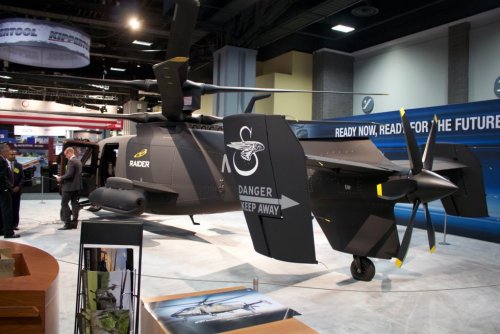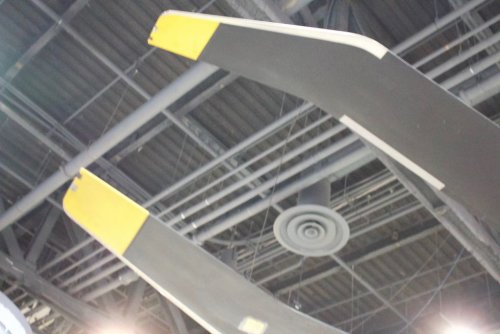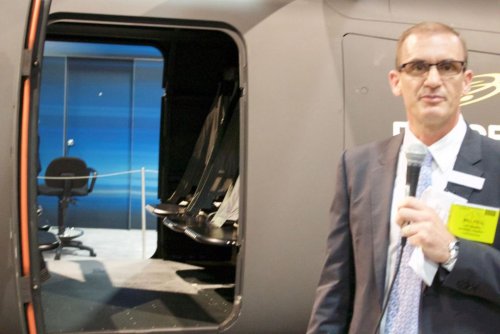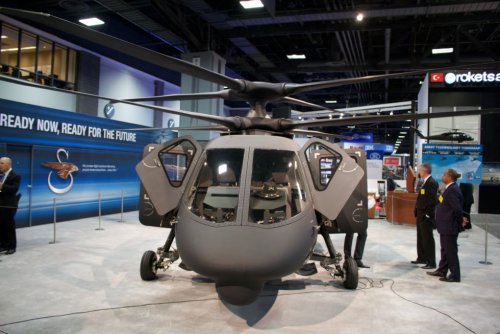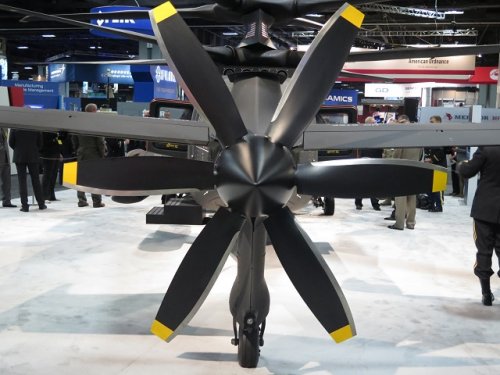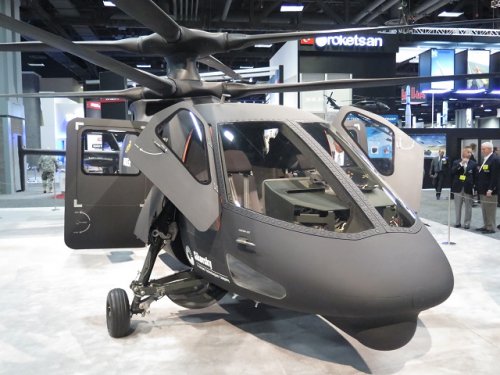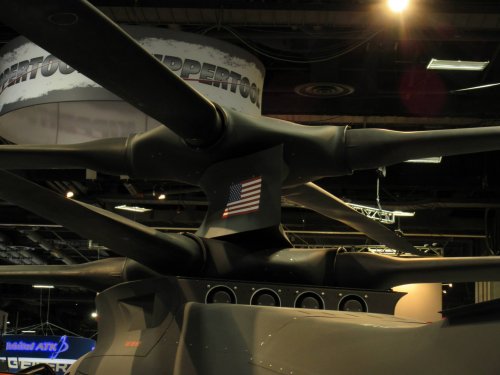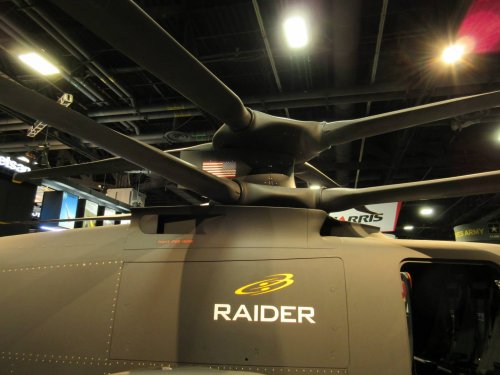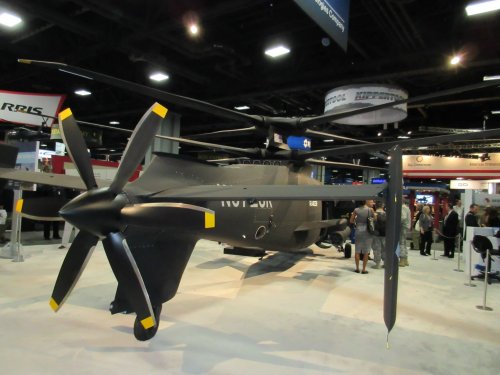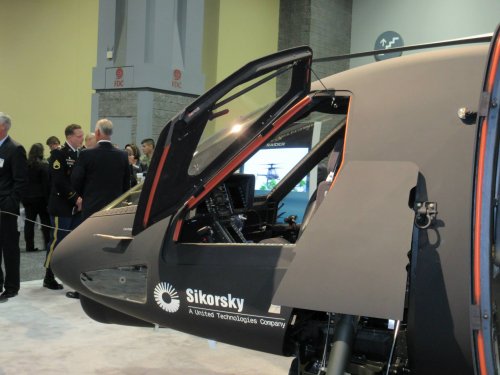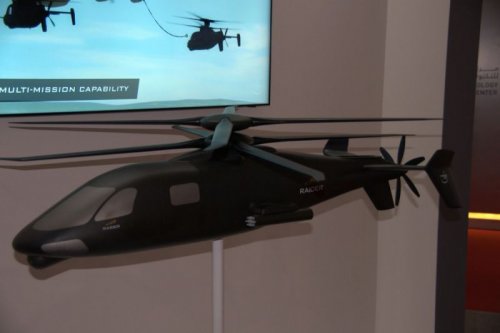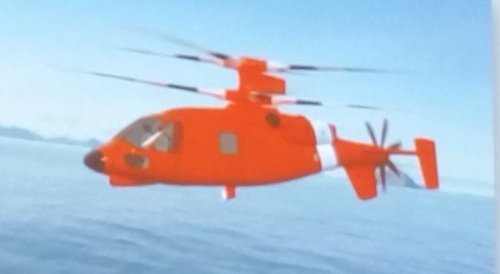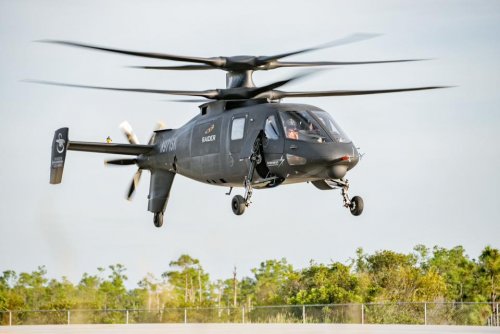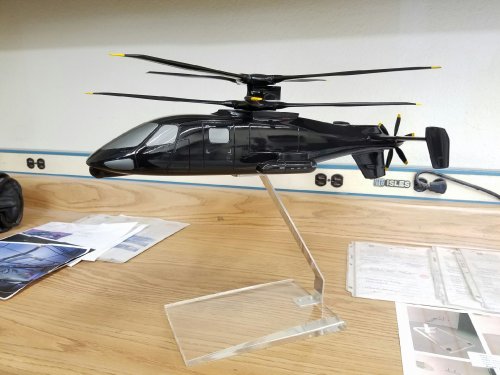Sikorsky’s “big bet” on the future of rotorcraft took an important step forward on May 22, when the S-97 Raider high-speed helicopter made its first flight.
With its rigid coaxial rotors and pusher propulsor, Sikorsky believes the Raider and subsequent designs can change the vertical-lift market by offering twice the cruise speed while retaining the low-speed attributes of conventional helicopters. Improved hot-and-high performance, efficiency and maneuverability, and lower noise, vibration and pilot workload will also be benefits.
The aircraft flown on May 22 is the first of two prototypes being built under a $200 million industry effort funded by Sikorsky and its supplier partners. This follows on from the $50 million company-funded X2 Technology Demonstrator, which flew 23 times from 2008-11 and exceeded its speed goal of 250 kt.
On its first flight at Sikorsky’s development flight center in West Palm Beach, the Raider was airborne for an hour, instead of the planned 30 minutes, says Mark Miller, VP of research and engineering. Raider chief pilot Bill Fell and X2 test pilot Kevin Bredenbeck completed three takeoffs and landings, and forward, rearward and sideward flight.
Where the 6,000-lb. gross-weight X2 proved the physics of the rigid coaxial-rotor compound helicopter, Miller says, the production-representative, 11,400-lb. Raiders are intended to show its operational effectiveness through customer demonstrations. They will also reduce risk for the 30,000-lb. SB-1 Defiant Sikorsky is building with Boeing for the U.S. Army’s Joint Multi Role technology demonstration.
Over some 100 hours of flight testing, Aircraft 1 will expand the Raider’s flight envelope with the goal of achieving the program’s key performance parameters (KPP) by mid-2016, says Miller. These include demonstrating hover out of ground effect at mission weight at 6,000 ft. altitude on a 95F day; 220 kt. cruise speed with external weapons; and 3G maneuverability at speed.
Flight testing will be conducted in three phases. Initially the Raider will be flown to 140-150 kt. in pure helicopter mode. Towards the end of Phase 1, software will be upgraded to Block 2, bringing in the variable-pitch propulsor and articulating tail to increase speed and enable the full flight envelope. Phases 1 and 2 will demonstrate the hover KPP carrying the equivalent of six troops and two crew. Phase 2 will focus on demonstrating – and likely exceeding - the speed objective when fitted with stub wings carrying weapons. “Raider is a balanced design optimized for more than 220 kt. fully weaponized, but the inherent speed of the configuration is more than 250 kt.,” says Miller. “That’s 100 kt. faster than anything else.”
Phase 3 will evaluate the maneuverability potential of the rigid coaxial rotor and propulsor. In addition to enabling level-attitude acceleration and deceleration and pushing the helicopter to higher forward speeds, the variable-pitch propeller can be used to produce reverse thrust, enabling the Raider to “hang on the prop” to point sensors and weapons toward the ground.
The second Raider is being assembled and is expected to fly late this year or early in 2016.

